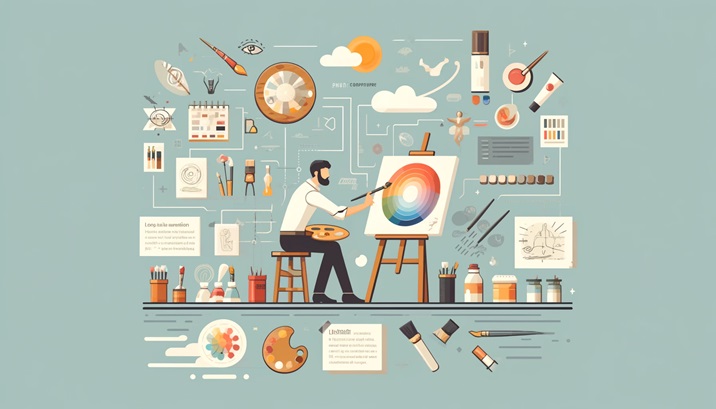Balancing Creativity and Professionalism in Creative Industries
Resume Optimizer Pro Editorial Team
Updated October 1, 2024

The creative industries often demand a fine balance between innovation and professional decorum. Whether you're in design, writing, advertising, or any other creative field, how you present your work can significantly impact your professional opportunities. This article explores how professionals in the creative industries can strike the right balance between creativity and professionalism in their work and interactions.
Defining Creativity and Professionalism
Understanding what creativity and professionalism mean in the context of your specific industry is the first step toward achieving balance. Creativity involves original thinking and the ability to conceive innovative ideas, while professionalism often relates to the conduct, aims, and qualities that characterize a professional person.
Creativity in Action
In creative roles, innovation is your currency. It’s about pushing boundaries and thinking outside the box. Creativity manifests as a new graphic design concept, a unique marketing strategy, or an unconventional approach to solving traditional problems.
Professionalism as a Foundation
Professionalism in the creative industries doesn’t just relate to how you dress or communicate; it's also about meeting deadlines, respecting client relationships, and maintaining a reliable network. It involves organizing and presenting your creative ideas in ways that are coherent and accessible to others.

Harnessing Creativity Without Sacrificing Professionalism
In creative industries, your ability to innovate needs to be matched by your ability to execute and present your ideas professionally. This dual capacity ensures that creative visions are not just fantasies but actionable insights that can influence and drive industry standards.
Channeling Creative Energies
Learn to channel your creative energies into productive outputs. For instance, a graphic designer might need to develop a visually stunning campaign that still aligns with the client’s brand guidelines. This requires a deep understanding of both creative design and brand consistency.
Structuring Creative Projects
Organizing your projects with clear timelines and objectives can help maintain a professional edge. Regular updates and checkpoints with stakeholders ensure that creative projects remain on track and within the scope of professional expectations.
Maintaining Professional Relationships in Creative Contexts
The nature of creative work often requires collaboration and feedback. Maintaining professional relationships is key to success, especially when balancing diverse and sometimes conflicting creative visions.
Collaboration and Feedback
Effective collaboration in creative fields involves open communication and the willingness to accept and integrate feedback. This can be challenging when personal creative visions are strong, but professionalism requires a degree of flexibility and openness to ideas.
Handling Creative Differences
Professionalism in handling creative differences involves respecting others' viewpoints and finding common ground. It’s crucial to approach disagreements with a focus on outcomes and solutions rather than personal preferences or egos.
Building a Professional Brand as a Creative
Your personal brand is a blend of your creative output and professional reputation. In creative industries, this brand is crucial to how clients and peers perceive you and your work.
Showcasing Your Work
A well-curated portfolio that showcases a variety of projects can reflect both your creativity and your professionalism. It should highlight not only the end products but also your process and problem-solving abilities.
Networking and Professional Growth
Engage regularly with your industry community through events, online platforms, and workshops. Networking is not just about sharing your creative work but also about building lasting professional relationships that can lead to more opportunities.
Digital Tools for Creative Professionals
Utilizing the right tools can help maintain the balance between creativity and professionalism. Digital tools can streamline project management, enhance creative outputs, and organize client interactions.
Project Management Tools
Tools like Trello, Asana, or Monday.com can help manage creative projects with timelines, deliverables, and team collaboration features that enhance professional workflow.
Creative Software
Investing in high-quality design software or creative suites can elevate the quality of your creative work while ensuring that your professional output meets industry standards.
Conclusion
Balancing creativity and professionalism in creative industries is crucial to building a successful career. By understanding and integrating both elements, you can ensure that your creative contributions are not only innovative but also professionally viable and respected. At Resume Optimizer Pro, we recognize the importance of this balance in crafting your resume. Our platform allows you to choose an AI-generated writing style that can lean towards the creative or technical side while ensuring your resume maintains a professional appearance. Whether you need a resume that showcases your artistic flair or one that underscores your technical expertise, Resume Optimizer Pro can help you present yourself in the best light possible.